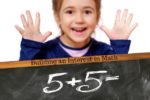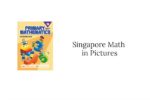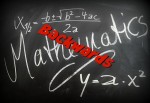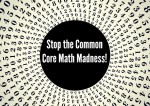Our math approach in previous years has been quite simple. We have used workbooks from the Critical Thinking Company. While I do like the Mathematical Reasoning curriculum, I’ve decided to change things up this year. We have switched to Singapore Math as well as added in components of living math. Children in Singapore using this method scored the highest in the world in math skills. That caused many to stop and notice the Singapore approach. The Singapore method is used in some schools in the USA and by a good deal of homeschoolers. It features (quoting from Wikipedia)
A spiral approach that builds upon preceding levels, and assumes that what was taught need not be taught again. When the same topic (such as place value) is revisited next year, it is discussed at a higher level.
The principle of teaching mathematical concepts from concrete through pictorial to abstract.
Systematic use of word problems as the way of building the semantics of mathematical operations. Simply put, students learn when to add and when to subtract, relying on the meaning of the situation (rather than “clue-words,” as often done in the US schools).
The need for repetitive drill is minimized by clever sequencing of the topics.
The use of bar-models in teaching problem solving (a form of pre-algebra).
The hallmark of the curriculum is the careful guidance of students, done in a child-friendly pictorial language, not only to technical mastery, but to complete understanding of all the “whys.”
I choose Singapore Math for many of those reasons listed. I have one son that is mathematically minded and is strong in mental math. Singapore will help him continue to develop his mental math skills and give him a strong basis for meaningful math. I have another son that hates repetition who would benefit from making transitions from a textbook to a workbook during a lesson. In other words, changing things up during the lesson works much better than staying with one thing the whole time. He also wants to go into a field that requires strong math skills so we are pursuing a strong math program.
In addition to Singapore Math we are utilizing living math. We are reading story and puzzle math books and watching math DVDs from the library. I showed my boys the first Math for Children DVD today and my son made sure to tell me that he wanted to watch more of them. Drill work has never been popular in our house, but some drill is necessary for math facts. We are utilizing games for math practice as well as the Fact Car Rally Race. My boys love this. They keep asking to do more. They each designed a race car for a track and once they pass a test at one level like +0 equations they move on to the next segment of the race. The race is done when they have mastered all their facts.
So how do we schedule it all? Here is a snippet from the first page of our schedule for this school year.
- Singapore Math
- Book
- Math for children DVDs Telling Time
- Singapore Math
- Game
- Drill
- Singapore Math
- Book
- Singapore Math
- Speed Math Strategies
- Drill
- Math for children DVDs Addition
- Singapore Math






Some things may take 10-15 minutes and others may take 45 minutes. But on average we will probably spend 30 minutes on math each school day <3 free spades game
Nice different approach to math learning.
Another way to make math fun for K-3 kiddies is to use DreamBox Learning. Its a math game online that gives parents feedback on how their kids are progressing. Better than worksheets because it keeps math fun but we still are able to track progress. The game also gets more challenging as the kids progress. Try it for free for 14 days – http://www.dreambox.com